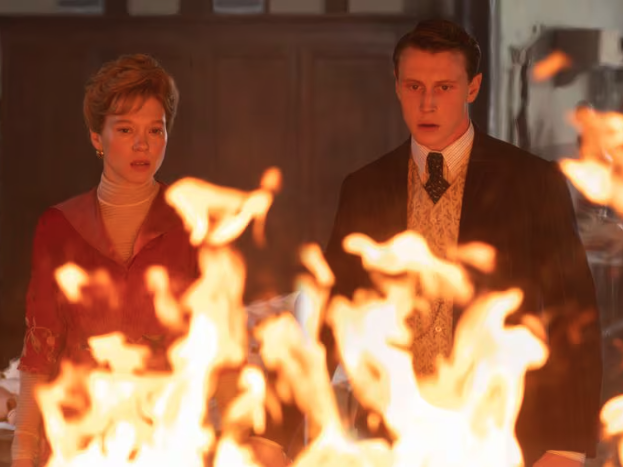Section Branding
Header Content
'The Beast' jumps from 1910, to 2014, to 2044, tracking fear through the ages
Primary Content
There's no easy way to sum up the work of the brilliant and maddening French writer-director Bertrand Bonello. In recent years, he's made a zombie thriller rooted in Haitian voodoo lore and an unconventional biopic of Yves Saint-Laurent. His most controversial title, Nocturama, is a hangout movie about a group of French youth carrying out terrorist attacks around Paris. Bonello's films have a unique way of blurring the intellectual and the aesthetic: Their gorgeous surfaces are often loaded with troubling and provocative ideas.
His latest movie is called The Beast, and it's one of the best and least classifiable things he's ever done. It's a wildly original adaptation of the 1903 Henry James novella The Beast in the Jungle, about a man who dwells in a constant state of fear.
James' story is a cautionary tale about the dangers of being too cautious, of not embracing life and love to the fullest. Bonello takes this premise and spins it in several unexpected directions. First, he recasts the hesitant protagonist as a woman, named Gabrielle, played by the wonderful Léa Seydoux. Then he positions her in three different stories, set in three time frames, and suffused with elements of horror, mystery and science fiction. It's easier to follow than it sounds: Even when it's not entirely clear where or when we are, Bonello's filmmaking is so hypnotic, and Seydoux's performance so subtly mesmerizing, that you can't help getting caught up in the flow.
The first story is the one that most closely resembles the novella. It's 1910, and Gabrielle is a renowned pianist who has a run-in at a Paris salon with a gentleman named Louis, played by the English actor George MacKay. In a setup that evokes the confounding 1961 classic Last Year at Marienbad, Gabrielle and Louis seem to vaguely recall having met before. There's a clear attraction between them, but Gabrielle, who's married, resists pursuing it. Her restraint will cost her in a climax that coincides with a real-life Parisian catastrophe, the Great Flood of 1910.
The second story takes place in Los Angeles in 2014, and has some of the eerie menace of David Lynch's masterpiece Mulholland Dr. Gabrielle is now an aspiring model and actor who's been housesitting for a wealthy Angeleno. Rattled by a violent earthquake one morning, she steps outside and runs into Louis, who's now a deeply disturbed incel who's been posting misogynist video rants online.
MacKay is utterly terrifying as this Louis, who's modeled on a man who killed six people in 2014 in Isla Vista, Calif. What makes this second segment so chilling is that, unlike in the novella, the protagonist's fear is not unfounded. The beast stalking Gabrielle is all too real.
The third story is the most elusive and intriguing. It's set in 2044, when the world is run by AI. Gabrielle plays a human who, to join the work force, must undergo a process that will rid her of her emotions. This segment, with its shades of Eternal Sunshine of the Spotless Mind, explains the framework of the entire movie: It turns out that the 1910 and 2014 sections are remnants of Gabrielle's past lives, now being purged from her subconscious.
Bonello doesn't tell the stories one at a time; he jumps around and among them. He's tracking the sources of human alienation and anxiety through the ages, asking why, in every era, we find ways to disengage from life and the people around us. The movie is especially insightful about how technology evolves. Each chapter features an artificial human companion of sorts: a line of baby dolls in 1910, a talking doll in 2014, a robot friend in 2044. Along the way, Bonello also asks questions about the future of movies, a medium so overrun with CGI that it's become harder to tell what's real from what isn't.
As grim as The Beast sounds, it isn't entirely pessimistic about the state of the world. I left the movie feeling disturbed but also enthralled, and strangely reassured by Seydoux's presence in all three stories. The futuristic Gabrielle may have to divest herself of her feelings, but Seydoux's emotions are always within reach. The more unreal her surroundings become, the more hauntingly human her performance feels.
Bottom Content




